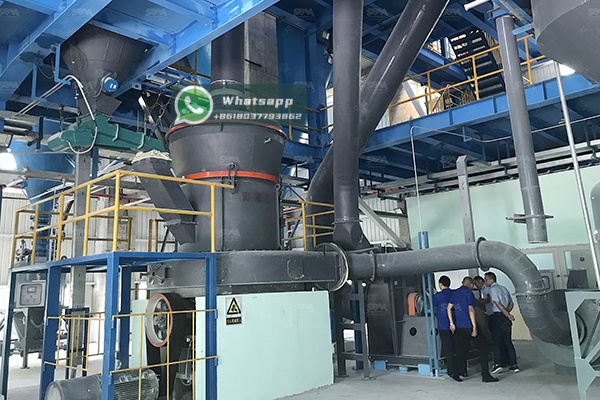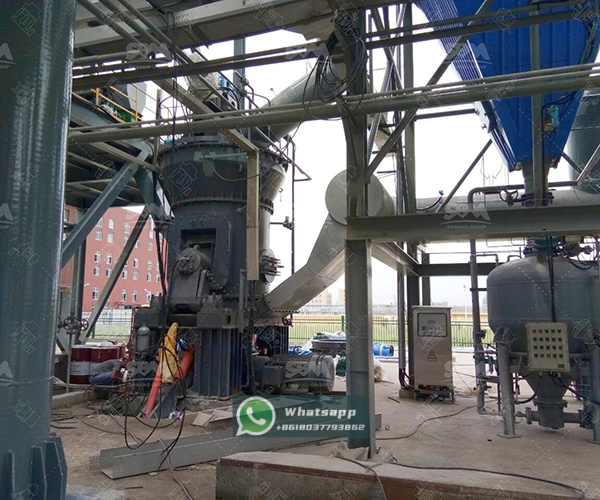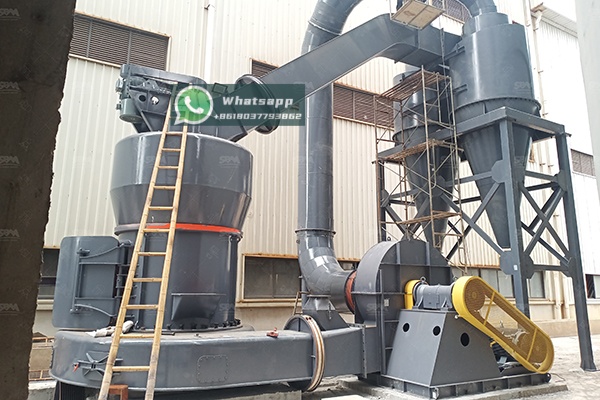In the European industrial landscape, the processing of minerals like olivine for specialized applications such as foundry sand and slag conditioning represents a critical manufacturing process. The efficiency and quality of these operations depend heavily on the grinding equipment employed. As industries strive for higher productivity, better product quality, and reduced environmental impact, the choice of grinding technology becomes paramount.
Olivine, a magnesium iron silicate mineral, has gained significant importance in European foundry operations due to its excellent thermal properties and chemical stability. When used as foundry sand, olivine offers superior heat resistance compared to traditional silica sand, reducing the risk of burn-on defects and improving casting quality. The mineral’s low thermal expansion coefficient minimizes mold wall movement during metal pouring, resulting in more dimensionally accurate castings.

For olivine to perform effectively in foundry applications, it must be ground to specific particle size distributions. The optimal size range typically falls between 100-200 mesh (149-74 microns), with controlled fractions of finer and coarser particles to ensure proper compaction and permeability. Achieving this precise particle distribution requires advanced grinding technology capable of consistent performance and minimal over-grinding.
In steel production facilities across Europe, slag conditioning represents another crucial application for finely ground minerals. The process involves adding specific materials to molten slag to modify its chemical and physical properties, making it more suitable for subsequent applications or disposal. Properly conditioned slag can be utilized in construction materials, reducing waste and creating valuable by-products.
The effectiveness of slag conditioning agents depends significantly on their particle size and surface area. Finely ground materials react more quickly and completely with the molten slag, leading to more efficient conditioning and reduced consumption of additives. This is where advanced grinding technology demonstrates its value in metallurgical operations.
Shanghai Zenith Machinery Co., Ltd., with its extensive experience in industrial grinding equipment, offers specialized solutions perfectly suited for European processing requirements. Among their comprehensive product range, two mills stand out for olivine grinding and slag conditioning applications: the LM Vertical Grinding Mill and the MTW Trapezium Grinding Mill.
The LM Vertical Grinding Mill represents a technological breakthrough in mineral processing equipment. Its integrated design combines crushing, grinding, powder selection, drying, and material conveying into a single compact unit, making it particularly suitable for European facilities where space optimization is crucial.

For olivine grinding applications, the LM Vertical Grinding Mill offers several distinct advantages. The vertical arrangement eliminates the need for auxiliary equipment like bucket elevators, reducing both footprint and energy consumption. The mill’s advanced grinding mechanism ensures uniform particle size distribution with minimal fines generation, which is critical for foundry sand applications where excessive fines can compromise mold permeability.
The environmental benefits of the LM Vertical Grinding Mill align perfectly with European industrial standards. The enclosed system minimizes dust emissions, while the efficient grinding process reduces energy consumption per ton of processed material. These features make it an excellent choice for European processors seeking to meet stringent environmental regulations while maintaining competitive operational costs.
| Model | Plate diameter (mm) | Capacity (t/h) | Output fineness (μm) | Max feed size (mm) | Main motor (kW) |
|---|---|---|---|---|---|
| LM130K | 1300 | 10-28 | 170-40 | <38 | 200 |
| LM190K | 1900 | 23-68 | 170-40 | <45 | 500 |
| LM280K | 2800 | 50-170 | 170-45 | <50 | 1250 |
For operations requiring flexibility in processing different materials or producing various particle size distributions, the MTW Trapezium Grinding Mill offers an excellent solution. This mill incorporates multiple patented technologies that enhance its performance for both olivine grinding and slag conditioning applications.
The MTW series features an advanced grinding curve and grinding ring design that improves grinding efficiency and extends wear part life. For European processors dealing with abrasive materials like olivine, this translates to reduced maintenance costs and increased operational uptime. The mill’s intelligent control system allows for precise adjustment of operating parameters, ensuring consistent product quality even with variations in feed material characteristics.
In slag conditioning applications, the MTW Trapezium Grinding Mill’s ability to produce precisely controlled particle sizes becomes particularly valuable. The conditioned slag’s performance in subsequent applications depends heavily on the fineness and particle size distribution of the grinding additive, making the MTW mill’s precision grinding capabilities essential for optimal results.
| Model | Max. Feed Size (mm) | Final size (mm) | Capacity (t/h) | Main motor (kW) | Fan motor (kW) |
|---|---|---|---|---|---|
| MTW110 | <30 | 1.6-0.045 | 3-9 | 55 | 55 |
| MTW138Z | <35 | 1.6-0.045 | 6-17 | 90 | 110 |
| MTW175G | <40 | 1.6-0.045 | 9.5-25 | 160 | 200 |
| MTW215G | <50 | 1.6-0.045 | 15-45 | 280 | 315 |
When implementing grinding solutions for olivine and slag conditioning applications in Europe, several operational factors must be considered. Energy efficiency remains a primary concern, given Europe’s high energy costs and emphasis on sustainable operations. Both the LM Vertical Grinding Mill and MTW Trapezium Grinding Mill incorporate design features that minimize energy consumption while maximizing throughput.
Maintenance requirements represent another critical consideration. European operations typically prioritize equipment reliability and minimal downtime. The modular design of Zenith’s grinding mills facilitates quick replacement of wear parts, while the robust construction ensures long service intervals even when processing abrasive materials.

Environmental compliance is particularly important in European industrial settings. Both recommended mills feature comprehensive dust collection systems and noise reduction technologies that help processors meet EU environmental standards. The enclosed design prevents material contamination and protects operators from exposure to processed materials.
A major European foundry recently replaced their traditional ball mill system with Zenith’s LM Vertical Grinding Mill for olivine processing. The results demonstrated significant improvements across multiple operational metrics. Energy consumption decreased by approximately 30%, while product consistency improved markedly, with the percentage of material within the target particle size range increasing from 78% to 92%.
The foundry also reported reduced maintenance costs, with wear part replacement intervals extending from every 1,200 operating hours to over 2,000 hours. The improved olivine sand quality translated to better casting performance, with a 15% reduction in casting defects related to sand properties. These improvements underscore the value of advanced grinding technology in specialized industrial applications.
As European industries continue to evolve, grinding technology must adapt to meet changing requirements. The trend toward Industry 4.0 and smart manufacturing is driving demand for grinding equipment with enhanced digital capabilities. Zenith’s grinding mills already incorporate advanced control systems that enable remote monitoring and optimization, positioning them well for this evolving landscape.
Sustainability considerations will increasingly influence equipment selection decisions. The energy-efficient design of both the LM Vertical Grinding Mill and MTW Trapezium Grinding Mill aligns with Europe’s ambitious carbon reduction goals. Future developments will likely focus on further improving energy efficiency while maintaining or enhancing processing capabilities.
The processing of olivine for foundry applications and materials for slag conditioning represents specialized industrial processes that demand advanced grinding solutions. Shanghai Zenith Machinery’s LM Vertical Grinding Mill and MTW Trapezium Grinding Mill offer European processors reliable, efficient, and environmentally compliant options for these critical operations.
With their robust construction, advanced control systems, and energy-efficient operation, these mills enable European industries to maintain competitiveness while meeting stringent operational and environmental standards. As processing requirements continue to evolve, partnerships with experienced equipment manufacturers like Shanghai Zenith Machinery will remain essential for success in the European industrial landscape.